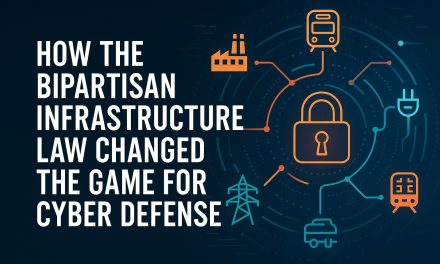Before 2020, if you asked most people what counted as “critical infrastructure,” they’d probably say power plants, airports, or maybe water treatment plants.
Today? Add pipelines, cloud data centers, hospitals, food processors, school districts, local governments—basically anything that keeps daily life running.
And adversaries know it.
That’s why in recent years the U.S. has been in full defense mode, overhauling how it protects critical infrastructure from cyberattacks. Some of that effort is high-profile. Most of it is happening quietly, under the hood, across 16 critical sectors.
Here’s how the landscape is changing.
Ransomware: From Nuisance to National Threat
2021 was the turning point.
When ransomware groups took down Colonial Pipeline, causing fuel shortages across the East Coast, cybersecurity officially became an infrastructure issue—not just an IT problem.
Since then, agencies like CISA, DOE, TSA, and HHS have ramped up mandatory cybersecurity directives for:
- Pipelines and energy grids
- Airports and rail systems
- Water and wastewater utilities
- Healthcare systems and hospitals
In 2022 alone, the FBI recorded ransomware attacks against 870 critical infrastructure entities across 14 of the 16 sectors. Half of those were in manufacturing, energy, healthcare, and transportation.
The response? Stronger oversight, federal coordination, and yes—compliance teeth.
CIRCIA: Incident Reporting Becomes Law
One of the most important cybersecurity laws you may not have heard of is CIRCIA: the Cyber Incident Reporting for Critical Infrastructure Act of 2022.
It requires covered entities (mostly critical infrastructure operators) to:
- Report substantial cyber incidents to CISA within 72 hours
- Report ransomware payments within 24 hours
This is huge. For years, cyberattacks went unreported or trickled up weeks later. Now, there’s a central mechanism to:
- Coordinate federal response
- Spot national-level patterns
- Deploy resources to stop threat escalation
Think of it as the NTSB, but for major cyber incidents. Quietly, CIRCIA is helping turn chaotic incident response into structured national defense.
Securing the Sectors: Who’s Doing What
Some key efforts by sector:
- Energy: DOE’s CESER office is funding grid cyber R&D and working with local utilities on detection and recovery tools.
- Water: EPA and CISA are jointly identifying vulnerable water systems and offering free cybersecurity assessments.
- Healthcare: HHS has rolled out new guidance and funding to protect hospital networks after a 128% surge in attacks.
- Transportation: TSA now mandates cybersecurity plans, access controls, and audits for pipeline and rail operators.
Plus: NIST is rolling out its Cybersecurity Framework 2.0 to help standardize how all sectors manage risk.
You can browse the 16 critical infrastructure sectors defined by CISA.
What IT and Security Leaders Should Know
Even if you’re not in a “critical” sector, the ripple effects are real:
- Vendor expectations are rising: your customers may require incident reporting, MFA, or SBOMs.
- Cyber insurance is tightening: underwriters expect stronger controls, especially if you’re part of a supply chain.
- Best practices are becoming de facto standards: think Zero Trust, segmentation, cloud logging, phishing simulations.
Bottom line: if you support operational technology (OT), deliver IT to regulated sectors, or depend on third parties that do—these changes affect you.
Use resources like StopRansomware.gov and CISA Shields Up to get actionable guidance.
Final Thought: Defense Is Becoming Muscle Memory
The U.S. isn’t trying to prevent every single breach. That’s impossible.
But it is trying to build resilience: the ability to detect, contain, respond, and recover fast—and at scale.
Critical infrastructure cybersecurity used to be the quiet corner of IT. Today, it’s frontline national security.
And if your organization supports, supplies, or connects to critical services, your role just got a whole lot more important.
Want more straight-talk insights on real-world cyber defense? Subscribe to ITGuru365 and learn from someone who actually secures systems that can’t go down.






Comments